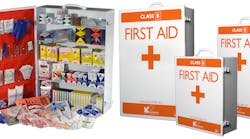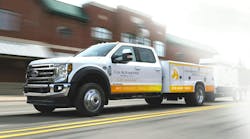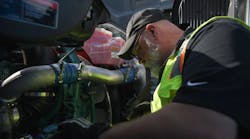The steps for responding to a spill of used oil are a little less complicated than other hazardous wastes, although you will still need to contact the proper authorities if the spill reaches water. They require four actions:
1. Stop the release.
2. Contain the release.
3. Clean up and properly manage the released used oil and any materials used to clean up the spill.
4. Remove the tank or container from service and repair or replace it.
Secondary Containment and Spill Kits
Secondary containment is required for hazardous waste stored in tanks and for used oil handlers that are covered under the U.S. EPA’s Spill Prevention, Control and Countermeasures (SPCC) rule. It’s also a best practice for all generators, because even a small amount of waste or oil that reaches surface water can contaminate thousands of gallons of water.
The hazardous waste regulations do not require a “spill kit,” per se, but they do require you to clean up spills as soon as possible and keep them from spreading, which for all practical purposes means having a spill kit on hand.
Spill kits come in many forms. Some are expensive, commercially made kits. Others are cobbled together with common materials.
Spill kits should contain equipment to protect employees from the hazards of a spill, while at the same time addressing four main areas:
- Control
- Containment
- Cleanup
- Disposal
Locate spill kits near where spills are likely to occur. Workers should know the location of each spill kit and what it’s designed to do. Be sure to train employees on situations that may require an evacuation rather than trying to handle the spill, such as life-threatening releases, fire or explosions, or extremely toxic chemicals.
Spill kits should be labeled in large, easily read letters and marked for the type of spills they’re intended to address.



